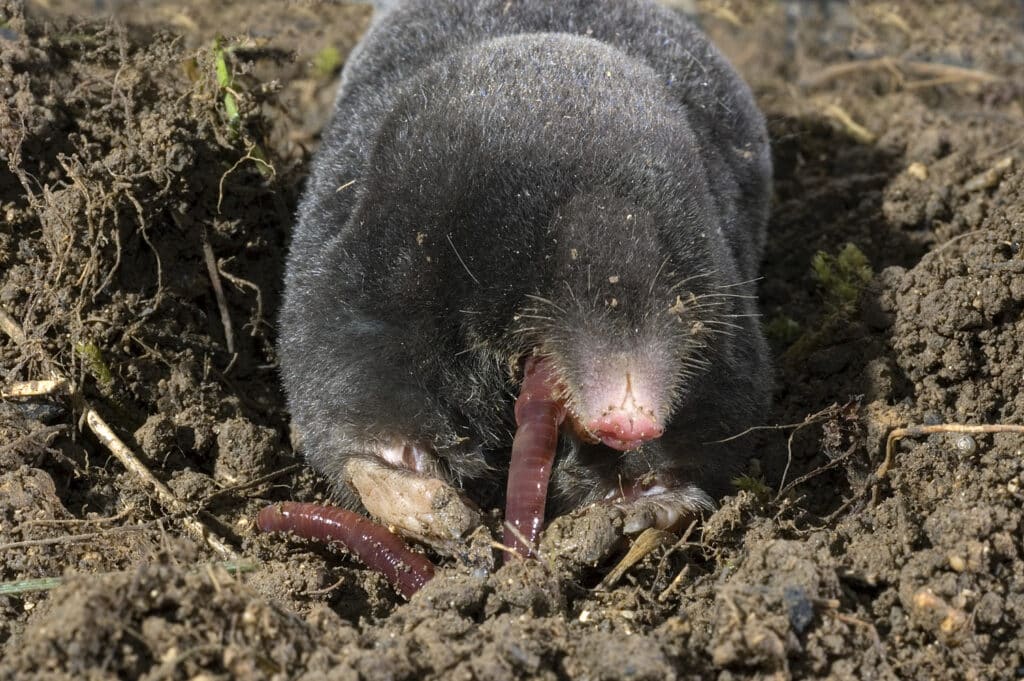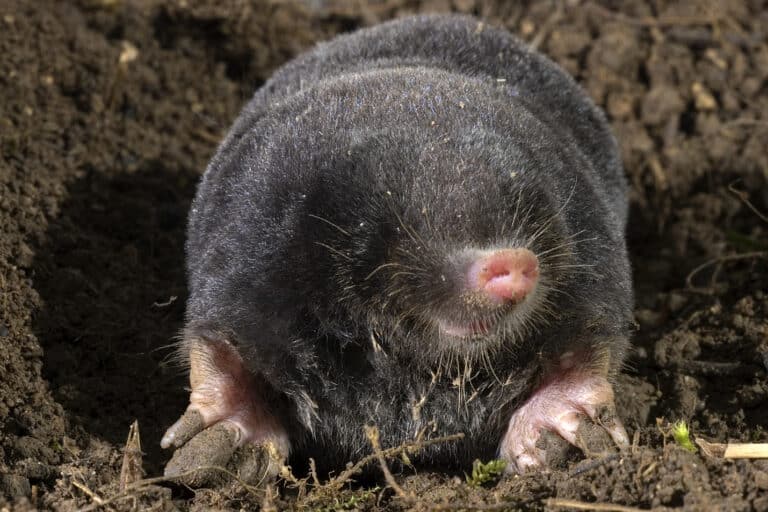Facts about the European Mole
Scientific name: Talpa europaea
At a glance
- Widespread in the UK (but absent from Ireland).
- Moles are not blind and their eyes are exceptionally good at detecting light.
- Moles help control many crop ‘pests’ by predating insect larvae.

Thanks to their leading roles in numerous books and TV programmes, European Moles - sturdy little mammals with shovel-shaped hands, black velvet fur, and a pink nose - are one of the UK’s most recognisable mammals.
And that’s despite being nocturnal and spending almost their entire lives underground. The more visible sign of moles is their molehills, waste material which come from digging or repairing burrows and usually found where moles are establishing new burrows or where existing ones are damaged (perhaps by the weight of livestock above).
One of 42 species worldwide, European Moles are native and widespread in the UK (but absent from Ireland). They are found in most areas where the soil is deep enough for tunnelling, but are uncommon in coniferous forest, moorland, and sand dunes.
There is an indication that numbers have declined since 2000, but there are still around an estimated 40 million moles tunneling away beneath our fields and lawns searching for (mainly) earthworms: an 80g mole needs 50g of earthworms per day.
Not everyone is so enamoured of a generally harmless little mammal that has been here for millennia of course. Moles used to be caught in huge numbers for their fur, or poisoned with strychnine. This DIY method of extermination was finally banned in 2006 on the grounds that it was unsafe for wildlife and caused the moles unnecessary suffering, much to the irritation of some farmers, greenkeepers, and gardeners.
‘Professional’ molecatchers, who still occasionally offend virtually everyone by stringing up dead moles along fences to ‘prove’ to farmers how many moles they have caught and in which fields, reacted reliably to the implementation of the ban by claiming moles would soon be reaching plague proportions.

One newspaper article (from 2009 but sadly typical of many such reports) quoted Welsh molecatcher Alan Evans in full flow:
“There seem to be more moles in gardens, fields and on the sides of the roads this winter than I’ve ever seen and I’ve been called to kill about 4,000 of them, just in my locality,” he said.
“Moles can be a big problem on farms and farmers used to lay strychnine to keep the moles away because, if soil from moles gets into silage, it can cause listeria in sheep and cattle.
“Mole hills also make the fields rough for machinery, if moles are allowed to get out of control, because they can breed like rats.” WalesOnline. Sally Williams.17 Jan 2009
Fortunately while moles still have no legal protection (other than the Animal Welfare Act 2006 which forbids unnecessary suffering, but is virtually useless as it’s unenforceable in the field), more measured voices have been heard and conservationists have reminded people that moles are not only a natural part of the environment, but their tunnelling can aerate and drain heavy soils, and as well as eating earthworms they can help control cockchafer, click beetle and carrot fly populations by predating on their larvae.
